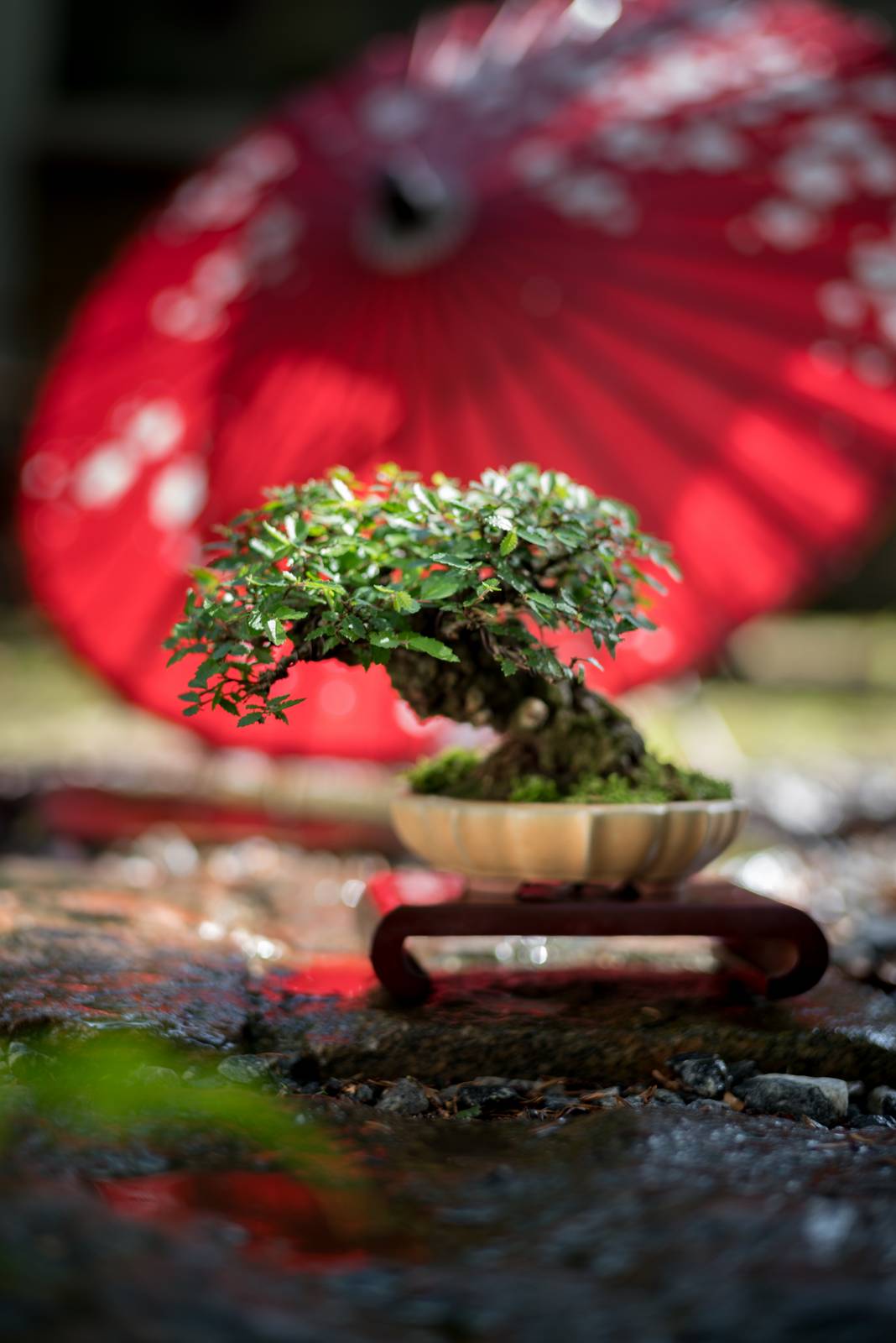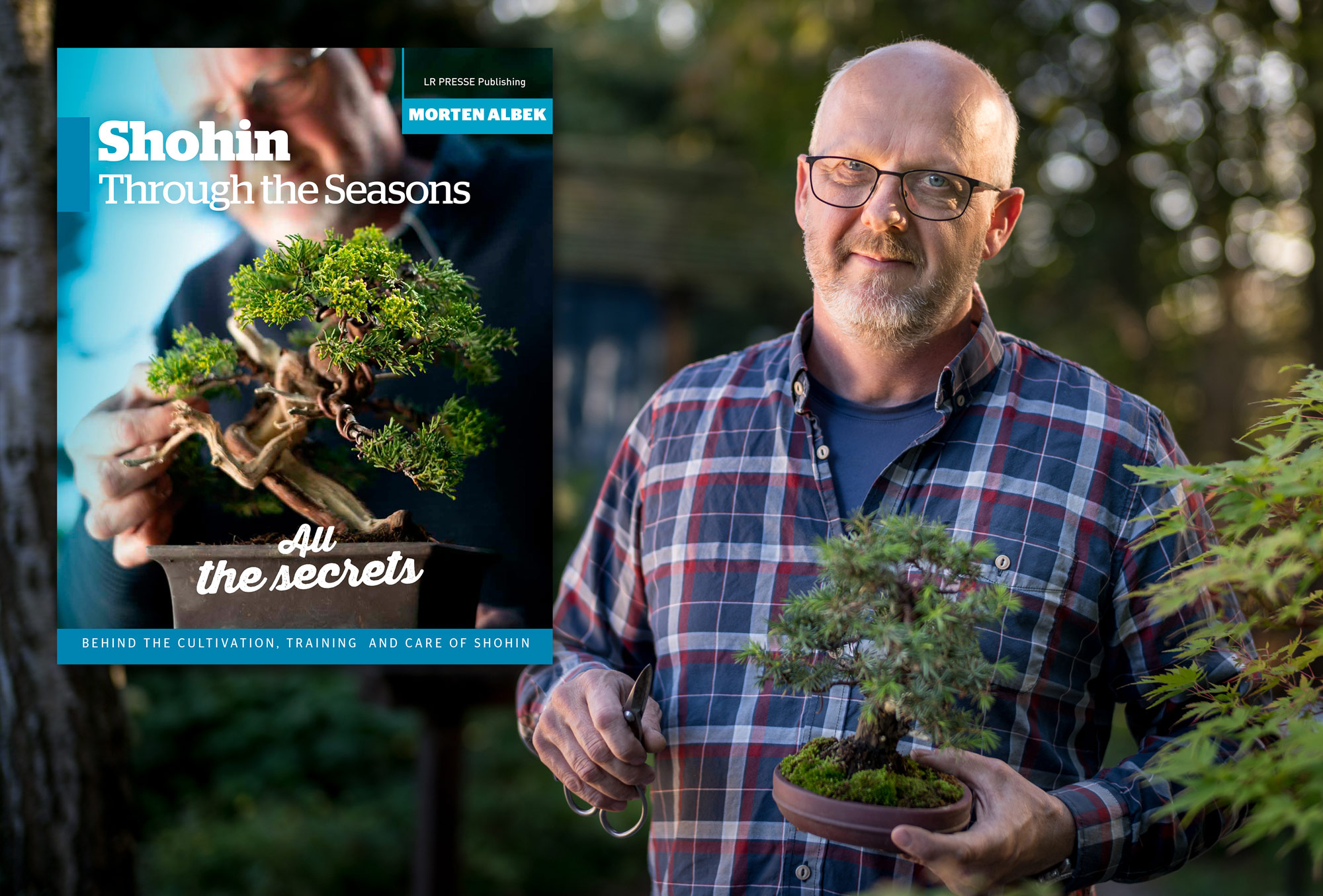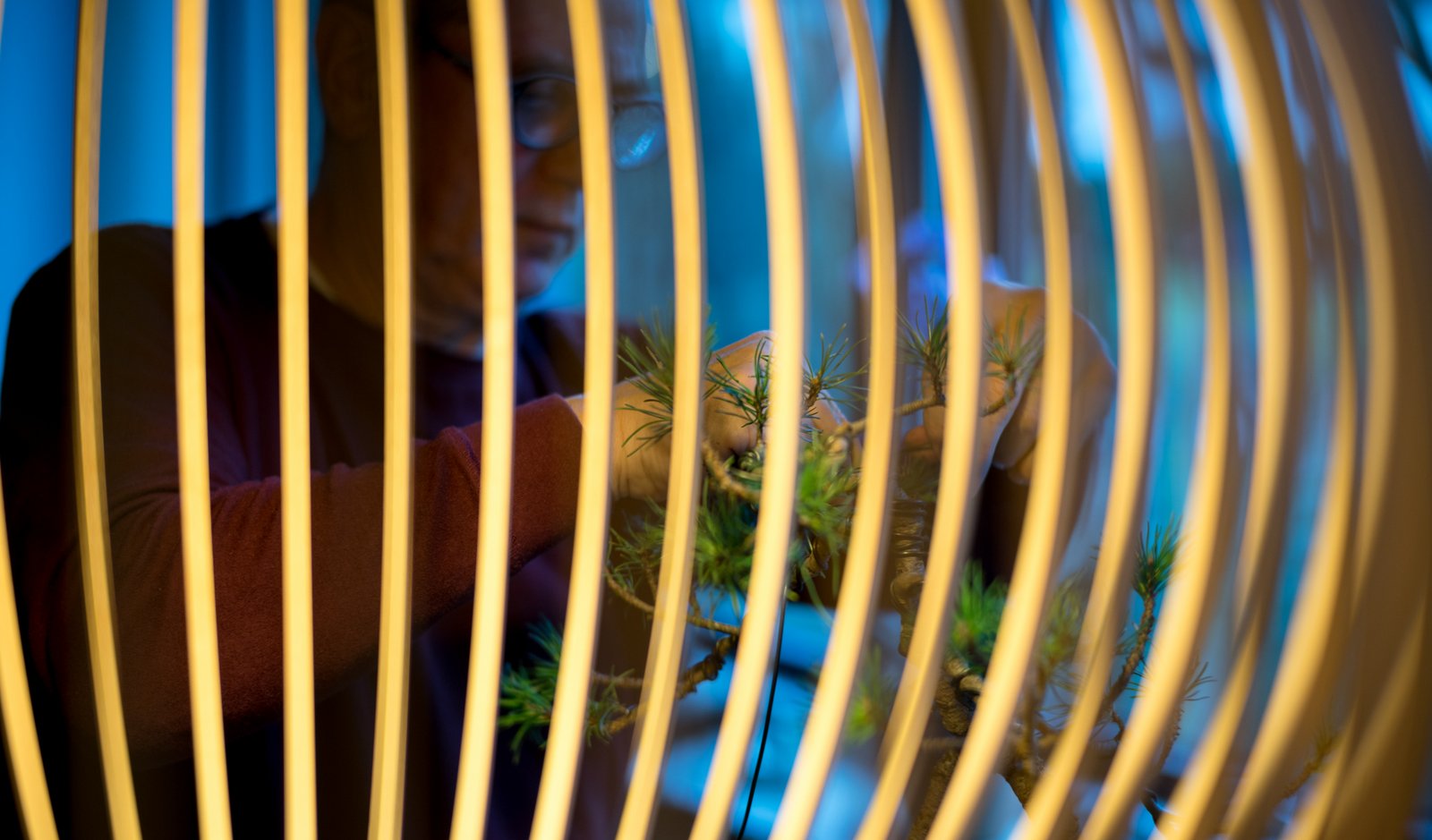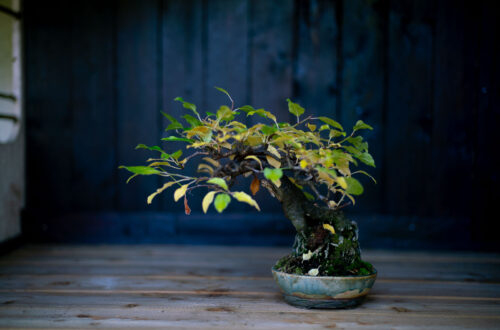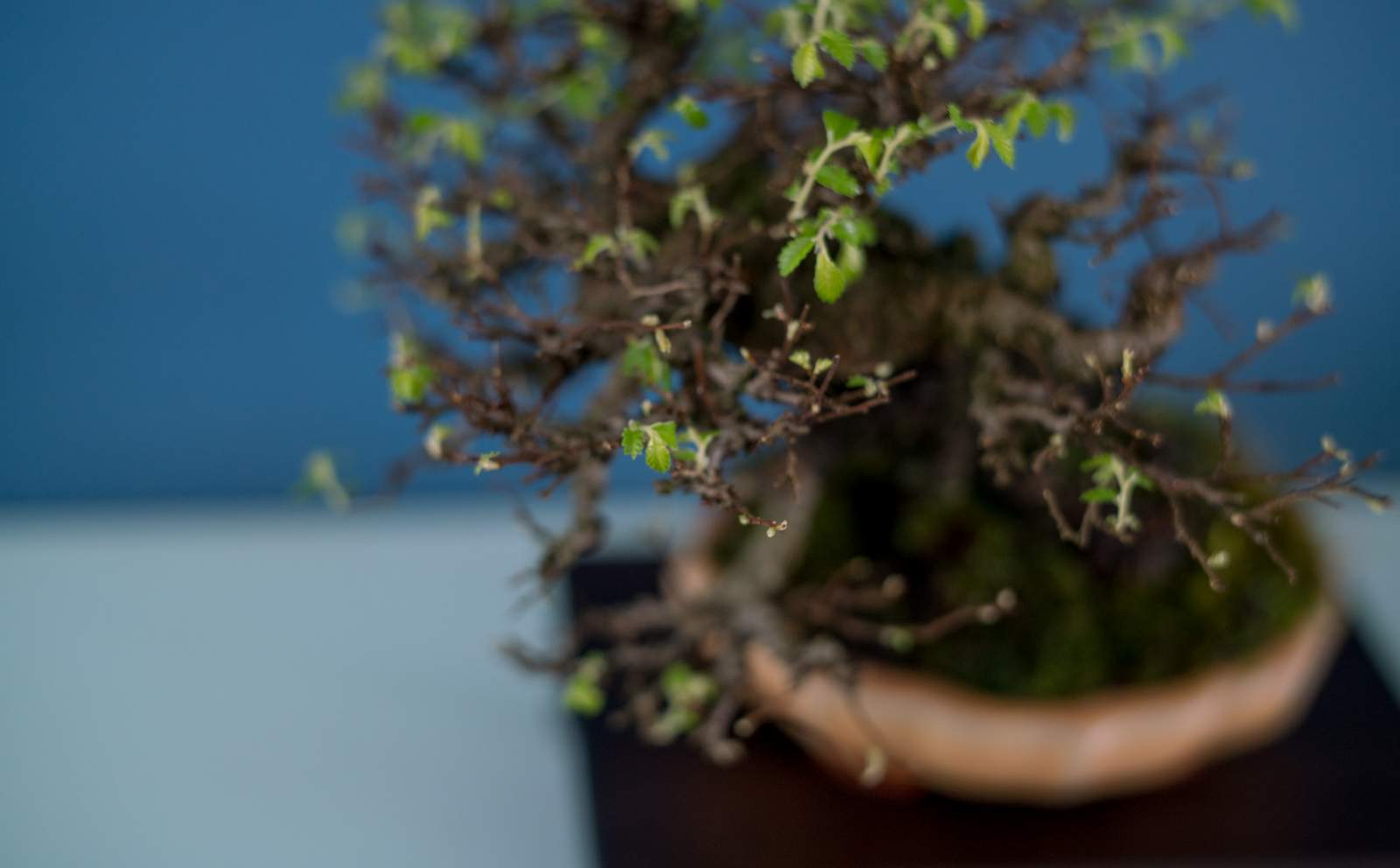
Developing and correcting a Shohin bonsai
Patience with bonsai is a well known subject. Developing a Shohin bonsai through 14 years pays off when the plan is right. I always lowed the rough bark at the Cork bark elm, Ulmus parvifolia Corticosa. It was mainly because of this feature I back in 2005 bought this small tree. Since then I carefully developed it.

Originally I just wanted to make a better ramification and add a more interesting feature to the tree. Changing it from a mass produced broom style tree, to a tree with its own characteristics.

Changing style and opinion
The first long time project was to thicken up some of the lower branches especially. To add the aged appearance of a tree with thick lower branches, tapering towards the top of the tree. As well as tapering at each branch. Always having in mind that a branch is thickest at the base and slowly tapers towards the end. Adding a natural appearance.
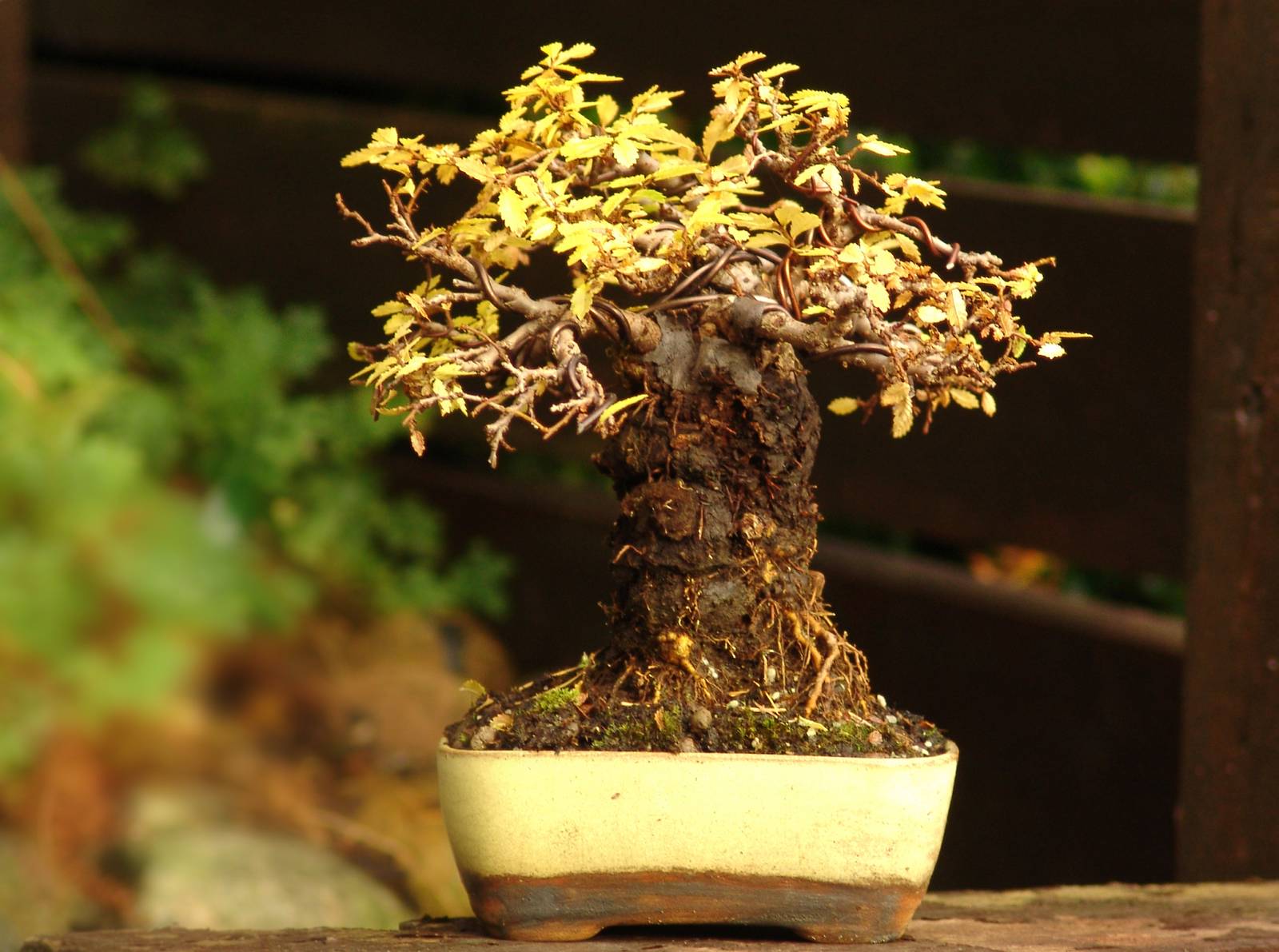
Correcting a fault
At the first stages I created the tree as informal upright tree. At that time a lower first branch was right and an important feature of the tree.
After some time I decided to change the tree into a more leaning positing, giving it more interest. Keeping the lower branch in the new position proved to be a mistake. I fell in love with the lower branch dropping down created at the earlier stages of the training. I always fancied this feature at another three. At a Juniperus chinensis where I developed the same key feature. Working very well at that specimen.

The fault at the Cork bark elm, is that it simply isn’t a realistic feature. A low branch beneath the canopy will be shaded out and die eventually. Maybe not at a bonsai where the light reaches the inside, but we have to keep in mind that it is resembling a large tree in nature. In nature such a branch will rarely survive. Therefore its doesnt work and I decided to remove it after some considerations.
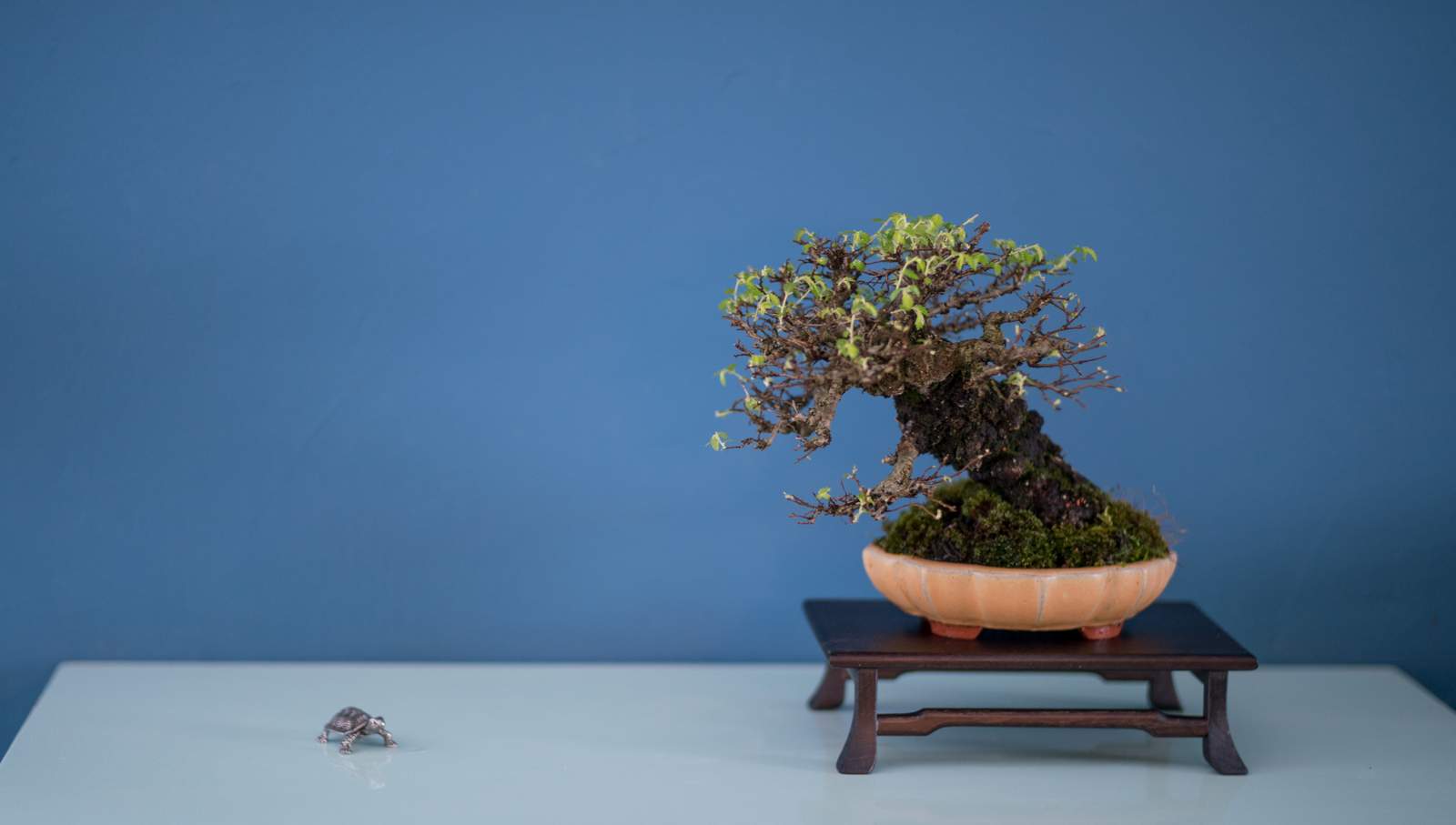
Achieving a simplified and much more harmonic result. Shohin bonsai is, due to their small size, always presenting the tree in a more simplified and suggestive manner, than when designing larger bonsai. Still it is of importance to keep the natural large tree in mind when styling the bonsai.
Bonsai is an ongoing learning experience, and trees develops and changes constantly. Mostly for the better.
